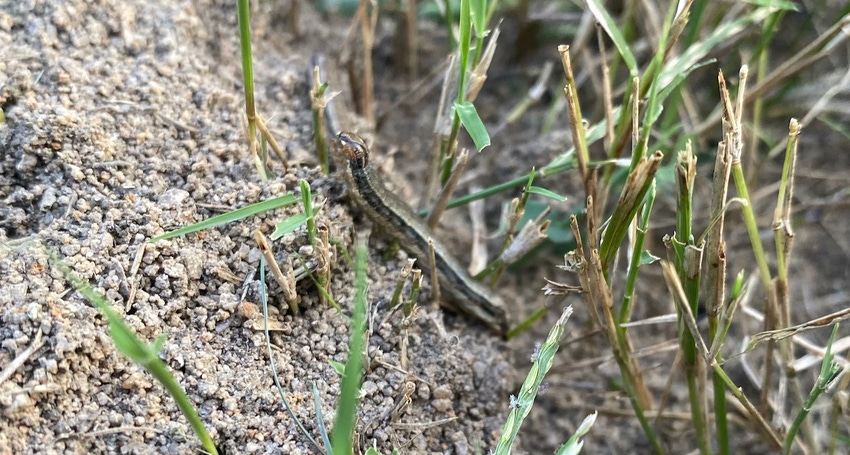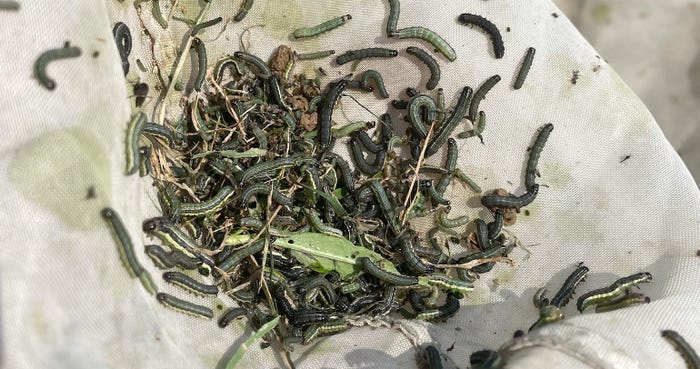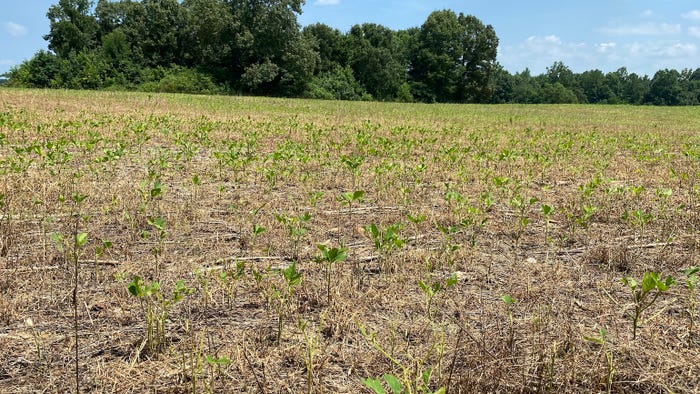
“Please, don’t ask me about fall armyworms.”
Scott Stewart is typically a pretty helpful guy, but he’s not in the mood to discuss the armyworm.
You can understand his frustration. The University of Tennessee entomologist (and now West Tennessee Research and Education Center director) estimates he’s personally fielded 400 phone calls on armyworms just this year.
These insatiable eaters began to spread north and east much earlier than usual. In June, David Kerns of Texas A&M warned his fellow entomologists in the Midsouth that the 2021 outbreak was bad. They hit Stewart’s neck of the woods in July — about a month earlier than a typical year.
But as the pests preyed upon millions of acres of pastures and crops, there was no time to count the losses. Another round of armyworms was coming. And when we sat down with Stewart in early September, he feared a third round of armyworms (and armyworm phone calls) was likely.
“An armyworm lifecycle is about 25-30 days. At each generation, the moths leapfrogged their way further across the country,” Stewart said. He added that armyworm damage has been reported as far east as Virginia, a state where these caterpillars are not typically a major pest.
“Fortunately, colder weather is about to put an end to their reign of terror,” he said.
But before we can put the “Year of the Armyworm” behind us, many are asking why this outbreak was worse than normal. And was the 2021 invasion just a fluke or a sign of things to come?

What went wrong?
When asked what factors contributed to the high populations of fall armyworms, Stewart said it’s hard to pinpoint. Certain insecticides didn’t seem to work as well as in previous years, but according to Stewart, this was undoubtedly the result of high and unrelenting pressure.
“The efficacy of an insecticide can be a numbers game,” he said. “I like the way my buddy at the University of Arkansas, Gus Lorenz, put it. ‘When you kill 80% of 100 armyworms you did a pretty good job. But you stink if you kill 80% of 1 million.’”
There is some preliminary evidence that suggests populations of fall armyworm may have become more resistant to pyrethroid insecticides. In western Tennessee, Stewart said control with pyrethroids was unusually poor, and in some instances a complete failure. However, he does not believe insecticide resistance is being driven by insect management practices in the Midsouth.
“Fall armyworms cannot survive a hard frost, so resistance that is selected for in Tennessee, for example, is probably an evolutionary dead-end unless those resistant genes somehow find their way back to where fall armyworm can survive the winter,” he said.
Armyworms, a global problem
The fall armyworm has become a worldwide pest. While native to the American tropics, in the past five years fall armyworms have invaded sub-Saharan Africa, the Near East and Asia Pacific. In 2020, the first fall armyworm sighting was recorded in Australia. Without native predators, armyworms have wreaked havoc on crops and pastures in recently invaded areas. Scientists say the pest has set unprecedented challenges for farmers in the developing world, who have limited access to armyworm-resistant GMO crops, newer insecticides, and modern equipment.
“Even with these technologies, this pest is infamous for developing resistance to GMO crops and Bt proteins,” Stewart said. “My colleague at the University of Tennessee, Juan Luis Jurat-Fuentes, spends much of his time trying to understand how fall armyworms become resistant to Bt toxins and how they are spreading their genes across the Americas.”
“We are also collaborating on a project to develop a new technology called gene silencing. The goal is to develop extremely specific and effective insecticides that have minimal impact on non-target species.”

Is this a trend?
Considering the “epic” 2021 population pressure across not only the U.S. but several continents, you start to wonder if growing fall armyworm numbers are in store for the future.
“I’ve been asked numerous times if this year was a fluke and whether fall armyworms will be back. The answer to both is yes,” Stewart said. “They will reinvade much of the Southern U.S. every year as they always have. Typically, predators and disease will correct unusually high numbers. Insect pressure is rarely predictable, but the extreme infestations of 2021 were hopefully an anomaly that won’t repeat itself.”
Of course, fall armyworms, like all insects, are cold-blooded animals whose development and life cycles are regulated by temperature. Changing temperatures directly affect their growth, reproduction, and ultimately population numbers and distribution.
“A warming climate will allow these and other subtropical insects to survive a little closer to home,” Stewart said. “I’m not a climatologist, but if the climate is warming, we should expect more frequent incursions from our insect neighbors to the south.”
About the Author(s)
You May Also Like






